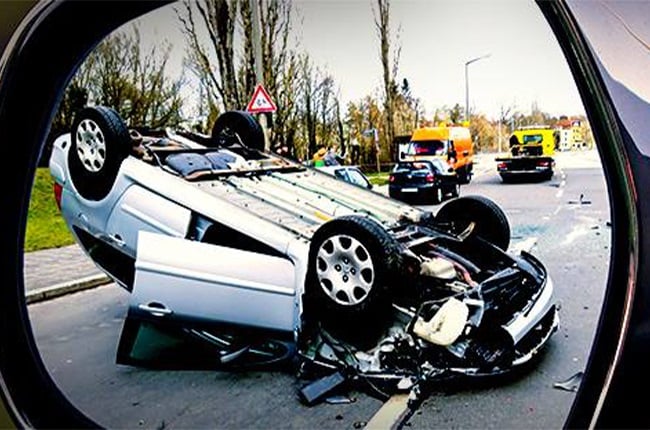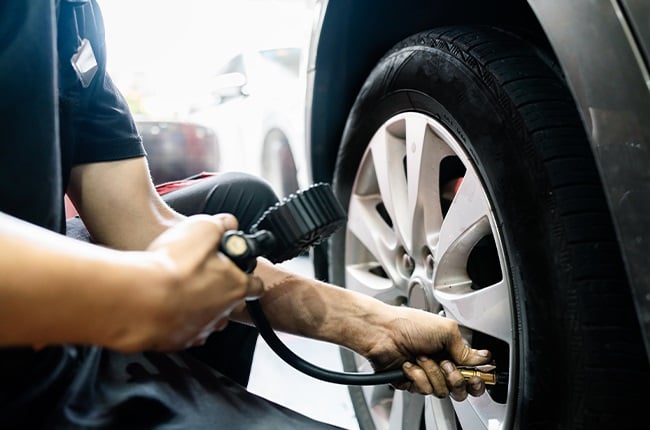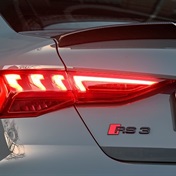• Poor tyre and wheel maintenance can lead to serious trouble on the road.
• The following tips may seem unnecessary, but they are essential when road safety is a primary concern.
• The RTMC cites burst tyres as the leading vehicle-related cause of accidents in South Africa.
• For more motoring stories, visit Wheels24
Badly maintained tyres and rims are a leading cause of car accidents in South Africa. Therefore, motorists need to know the real and often fatal risks of poorly maintained tyres, get into the habit of regular tyre inspections, tyre and rim maintenance, and make well-informed decisions when purchasing tyres.
In most of the RTMC's seasonal, quarterly and annual reports, burst tyres are cited as the leading vehicle-related cause of accidents in South Africa, with up to 73% of vehicle failures attributed to tyres alone.
According to the RTMC's most recent annual report, 67 893 drivers were issued with notices for driving with worn tyres in a single year. Counting only motorists who received notices, that is nearly 200 accidents a day just waiting to happen.
It's also highly concerning that many motorists opt for used tyres after a survey by Sumitomo Rubber SA revealed that around 60% of second-hand tyres in South Africa are illegal.
Tyre and wheel maintenance
Dial Direct provides some tips for making sure that your tyres and wheels are in tiptop shape.
Tyres:
• Spec inspection: Make sure that your vehicle's tyres meet the size, speed and load rating requirements for your vehicle and their intended use.
• Root in research: Do thoroug research when buying a new set of tyres, making sure that you find a good all-rounder tyre that offers low rolling resistance and good fuel consumption whilst still providing enough grip, aquaplaning resistance, and stopping power in all weather conditions.
• Read the dots: When purchasing new tyres, look out for the tyres' 4-digit DOT code, printed on the wall of the tyre. A dot code of 3718, for example, means that the tyre was manufactured in the 37th week of 2018. A good guideline is that you shouldn't purchase tyres more than six years past their date of and tyres that are more than 10 years past their date of manufacture should be replaced immediately.
• Used and bruised: Refrain from buying second-hand tyres, especially when they have been illegally "regrooved".
• Fill-up check: When you fill-up with fuel, check the inflation pressure in all your tyres with a reliable pressure gauge. Don't simply rely on "eying it", as tyres below recommended pressures could still appear sufficiently inflated.
• Cold is cool: Only check tyre pressure when the tyres are cold. If you deflate a hot tyre to the recommended pressure, it may become under-inflated, leading to a heat build-up and increasing the risk of a blowout.
• Pressure perfect: Inflate tyres to the recommended pressure in your owner's manual or the tyre inflation guide decal in the glove box or door pillar. Should you have aftermarket rims and/or tyres fitted to your vehicle, check correct pressures with the installer, as they probably differ from standard pressures.
• Surface scan: If there are any sharp objects lodged in the tyre, cuts, bulges or bruises on the tyre's surface or walls, it's a serious reason for concern. A bulge on the tyre's surface is caused by internal damage and puts you at high risk of a blowout. If a tyre's sidewall is damaged, replace it immediately.
• Wary of wear: If a tyre is wearing more in the middle than on the shoulders, it's probably over-inflated. If it's wearing more on the shoulders, then it's likely to be under-inflated. Uneven wear may also indicate a worn steering or suspension component, and over or under-inflated tyre or bad wheel alignment and/or balancing.
• Eye on trends: Look out for unusual trends. For instance, if a tyre loses pressure faster than the others, it could be a slow puncture, leading to a blowout.
• Tread carefully: Ensure that each tyre has adequate tread. The South African legal limit is 1mm of tread, but anything below 3mm limits the tyre's ability to function effectively. Replace tyres if they're worn down to the wear bars on the tread.
• Cap it: Always check that all valves on your vehicle's tyres have valve caps, preventing small objects from getting into the valve and causing a leak.
• Tyre retirement: If a tyre has been in service for more than five years, it should be regularly checked for cracks and replaced no later than the six-year mark.
• Beware the spare: Remember to perform the same checks that you perform on the tyres on your vehicle, on the spare, and be prepared to replace a rarely used or unused spare if it's exceeded its lifespan. Also, make sure that you have the correct jack and other tools to remove a damaged wheel and tyre.
Wheels:
• Keep it tight: Ensure that all the wheels are securely fastened and that the correct specification and quality of nuts and bolts are used. Make sure to check every nut and bolt, as a single failure could lead to failure of the entire system. Beware of overtightening these parts, as this, too, could lead to thread failure and disaster.
• Rim right: Make sure that the rims fit the specification for your car and that you have suitable tyres fitted for the specific size of rim. Ensure that rims aren't cracked or bent. Even minor defects could lead to anything from insufficient sealing between the tyre and rim and a loss of tyre pressure, to catastrophic failure of the rim itself.
• Look for a leak: The wheel itself must be checked inside and out for things like grease, oil or brake fluid leaking, which could indicate a problem with the wheel bearing, brakes or CV joint.
• Balance act: Ensure the wheel balancing and alignment are checked. Misaligned and improperly balanced wheels could cause anything from an increase in fuel consumption, to uneven tyre wear and blowouts.
If a tyre does burst, it's imperative to remain calm, keep both hands on the steering wheel, avoid making sudden steering movements or slamming on the brakes, keep the vehicle straight, gently decelerate, pull over to spot that's out of the way of oncoming traffic and switch on your hazard lights.
Anneli Retief is the Head of Dialdirect Insurance.




 Publications
Publications
 Partners
Partners















